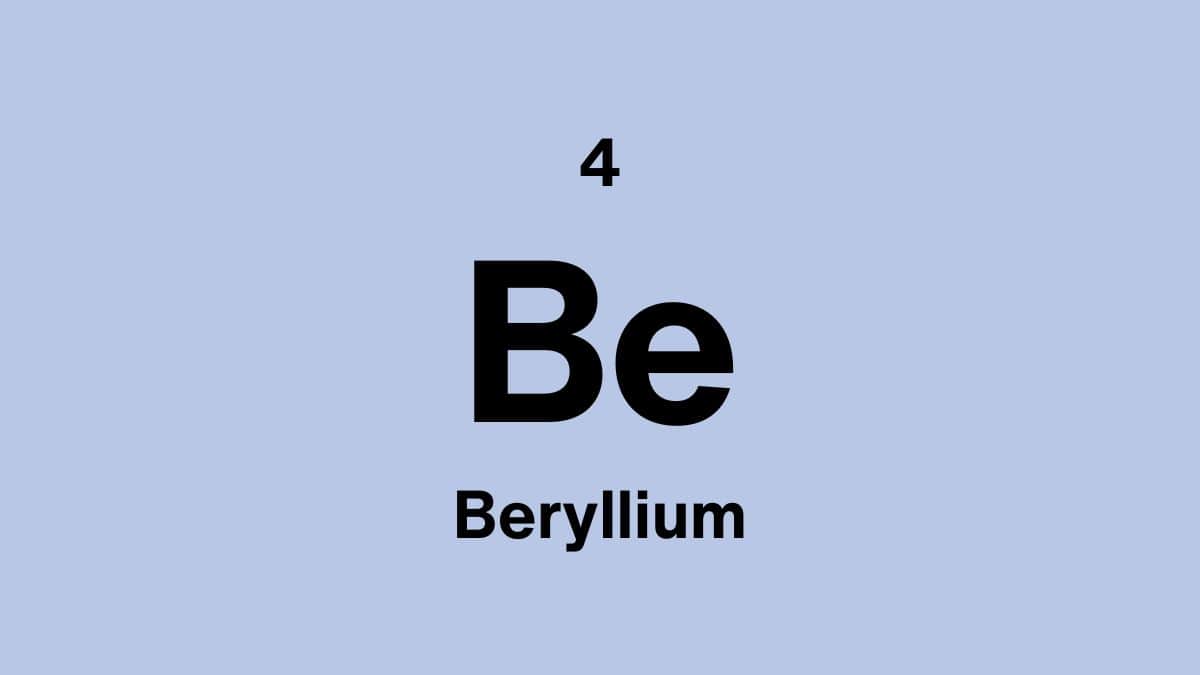Properties of titanium
| Atomic Number: | 22 |
| Atomic Symbol: | Ti |
| Atomic Weight (amu): | 47.867 |
| Electronegativity: | 1.54 |
| Melting point: | 1668°C | 3034°F | 1945K |
| Boiling point: | 3287°C | 5948°F | 3560K |
What does titanium look like?
Titanium is a lustrous, silver-white transition metal with a slightly darker shade than silver. It has a metallic appearance, and in its pure form, it has a smooth, polished surface. Titanium can also be found in a range of colors when subjected to certain processes, such as anodising, which creates a thin oxide layer on the surface of the metal that refracts light differently depending on its thickness. This process can produce colors ranging from blue to purple, gold, and even green. In its natural state, titanium is a solid metal that is often used in various applications, including aerospace, medical implants, and sports equipment.
What is the biological role of titanium?
Titanium does not have any known biological role in the human body, and it is not considered an essential element for life. However, due to its unique properties, titanium is commonly used in medical implants, such as joint replacements and dental implants, because it is biocompatible and does not react with body tissues or fluids. In these applications, the body's natural processes help to integrate the implant with the surrounding tissues, providing long-term stability and functionality. Additionally, titanium is also used in some medical equipment, such as surgical instruments and pacemakers, due to its resistance to corrosion and ability to withstand sterilization procedures. While titanium does not have a direct biological role, its properties make it a valuable material in many medical applications.
What is pure titanium used for?
- In the aerospace industry titanium's strength-to-weight ratio makes it an ideal material for aircraft components, such as landing gear, structural frames, and engine parts.
- Due to its biocompatibility and ability to integrate with bone, pure titanium is often used in medical implants, such as joint replacements, dental implants, and pacemakers.
- Titanium's resistance to corrosion and high temperatures makes it an ideal material for use in chemical processing equipment, such as heat exchangers and reactors.
- Titanium's resistance to saltwater corrosion makes it an ideal material for use in marine applications, such as propeller shafts, hulls, and underwater pipelines. Sporting goods: The high strength and low weight of pure titanium make it ideal for use in sporting goods, such as tennis rackets, golf clubs, and bicycle frames.
- The unique color and texture of titanium makes it a popular choice for architectural features, such as cladding, roofing, and sculptures.
What are the main compounds with titanium
Titanium dioxide - This is the most commonly used titanium compound and is used as a white pigment in paints, coatings, plastics, and paper. It is also used as a UV blocker in sunscreens and other skincare products.
Titanium tetrachloride - This compound is used in the production of titanium metal through the Kroll process, which involves reducing titanium tetrachloride with magnesium.
Titanium carbide - This compound is an extremely hard material that is used in cutting tools, abrasives, and coatings.
Titanium nitride - This compound is a hard, wear-resistant material that is used as a coating for cutting tools, moulds, and other metal parts.
Titanium hydride - This compound is used as a source of hydrogen in various industrial processes and is also used as a powder in the production of titanium metal and alloys.
Overall, these compounds are important in a range of industries, including aerospace, automotive, medical, and construction.
Where can titanium be found?
Titanium is a relatively abundant element and can be found in a variety of minerals, including
- Ilmenite: This is the most important source of titanium and is a common component of heavy mineral sand deposits. Ilmenite is composed mainly of iron and titanium oxides.
- Rutile: This mineral is another important source of titanium and is often found in association with ilmenite. Rutile is composed of titanium dioxide and is a brighter white color than ilmenite.
- Leucoxene: This is a naturally occurring mixture of several titanium oxides, including rutile and ilmenite.
- Anorthosite: This is a type of igneous rock that is rich in plagioclase feldspar and contains small amounts of titanium.
- Perovskite: This is a calcium titanium oxide mineral that is found in some igneous rocks and some kimberlite pipes.
Is titanium expensive?
Titanium is generally considered an expensive metal and costs more or less $8.81/kg. The reason is its relative rarity and the difficulty involved in its production. The cost of titanium is affected by many factors, including the cost of raw materials, energy costs, processing and refining costs, and market demand. Compared to other common metals like steel or aluminum, the cost of titanium is typically much higher. The high cost of titanium is one of the factors that limit its use in some applications, particularly those where large quantities of metal are required. However, the unique properties of titanium, such as its strength-to-weight ratio, corrosion resistance, and biocompatibility, make it an attractive material for certain applications where its performance characteristics are critical. As a result, titanium is commonly used in industries such as aerospace, medical, and chemical processing, where its performance justifies the higher cost.
Will we ever run out of titanium?
It is highly unlikely that we will run out of titanium in the foreseeable future. Titanium is a relatively abundant element, and its reserves are estimated to be more than adequate to meet our current and future needs. While titanium deposits are not evenly distributed around the world, there are large deposits in several countries, including Australia, South Africa, Canada, and China. In addition, new deposits are constantly being discovered and developed through exploration and mining activities. Furthermore, advances in technology and mining techniques are making it possible to access previously inaccessible deposits, which could increase the world's supply of titanium even further. Therefore, it is safe to say that we will not run out of titanium anytime soon, and it will continue to be an important material in many industries for the foreseeable future.
Can titanium be recycled
Yes, titanium can be recycled, and the recycling of titanium is becoming increasingly important as the demand for metal continues to grow. Titanium recycling involves collecting scrap and other discarded titanium materials and processing them to extract the metal. The recycling process for titanium typically involves several steps, including sorting, cleaning, and processing the scrap material to remove any impurities. Once the scrap material has been processed, it can be melted down and reused to create new titanium products. Recycling titanium has several benefits, including reducing the need for virgin titanium ore and reducing the amount of waste sent to landfills. In addition, recycling titanium requires significantly less energy than producing new titanium from ore, which can help reduce the environmental impact of titanium production. Overall, the recycling of titanium is an important part of sustainable manufacturing and helps to ensure that this valuable material can be used efficiently and effectively for many years to come.
Who discovered the titanium element?
The discovery of titanium is generally attributed to the British mineralogist William Gregor, who first identified the presence of a new mineral in Cornwall, England in 1791. Gregor named the mineral menachanite and described it as a "new and undescribed substance." In 1795, the German chemist Martin Heinrich Klaproth analysed a sample of menachanite and concluded that it contained a new element, which he named titanium after the Titans of Greek mythology. However, it is important to note that several scientists were working on the discovery of titanium around the same time, including the Swedish chemist Jöns Jacob Berzelius and the French chemist Nicolas Louis Vauquelin. Berzelius was the first to isolate titanium in its metallic form in 1825. Overall, the discovery of titanium was the result of the collective efforts of many scientists and researchers over a period of several years, and it is difficult to attribute its discovery to any one individual.
Is titanium dangerous?
In general, titanium is not considered a dangerous material, and it is widely used in a variety of applications in industry, medicine, and everyday life. Titanium is biocompatible, meaning that it is not harmful to living tissue and is often used in medical implants and devices. However, like any material, titanium can be dangerous if it is not handled properly or if it is used in inappropriate ways. For example, exposure to titanium dust or fumes can be harmful if inhaled, and titanium particles can cause skin and eye irritation. In addition, certain forms of titanium, such as titanium tetrachloride, can be corrosive and toxic if not handled properly. However, these forms of titanium are generally not encountered in everyday use. Overall, titanium is a safe and versatile material when used appropriately and handled with care. As with any material, it is important to follow proper safety precautions when working with titanium to minimize the risk of harm.
Fun facts about titanium
- Titanium is the 9th most abundant element on Earth's crust and is found in rocks, soils, and sediments.
- Titanium is a corrosion-resistant metal and is often used in marine applications, such as boat propellers and hulls.
- The world's largest producers of titanium are Australia, South Africa, Canada, and China.
- Titanium is biocompatible, meaning that it is not harmful to living tissue, and is often used in medical implants and devices, such as hip replacements and dental implants.
- Titanium is a relatively lightweight metal and is often used in aerospace applications, such as aircraft frames and engines.
- The hardness and durability of titanium make it a popular choice for high-end sports equipment, such as golf clubs and tennis rackets.
- The highest concentration of titanium in the human body is found in the bones and teeth.
- Titanium has a high melting point of 1,668°C (3,034°F), which makes it useful in high-temperature applications, such as jet engines.
- The first use of titanium in dentistry was in the 1940s when it was used to make orthodontic appliances.
Funny titanium Jokes, Puns and One-Liners
What did one titanium atom say to the other? "I like your structure."
Why is titanium the dentist's favourite metal? Because it's "tooth-tally" awesome!
Why did the titanium bar go to the gym? To get "buff"ed up!
Why do golfers love titanium clubs? Because they're the "driving" force!
We compiled a list of the Top 50 Chemistry Jokes and Puns of all time!



